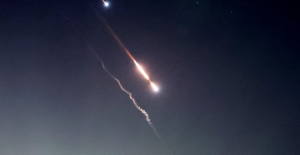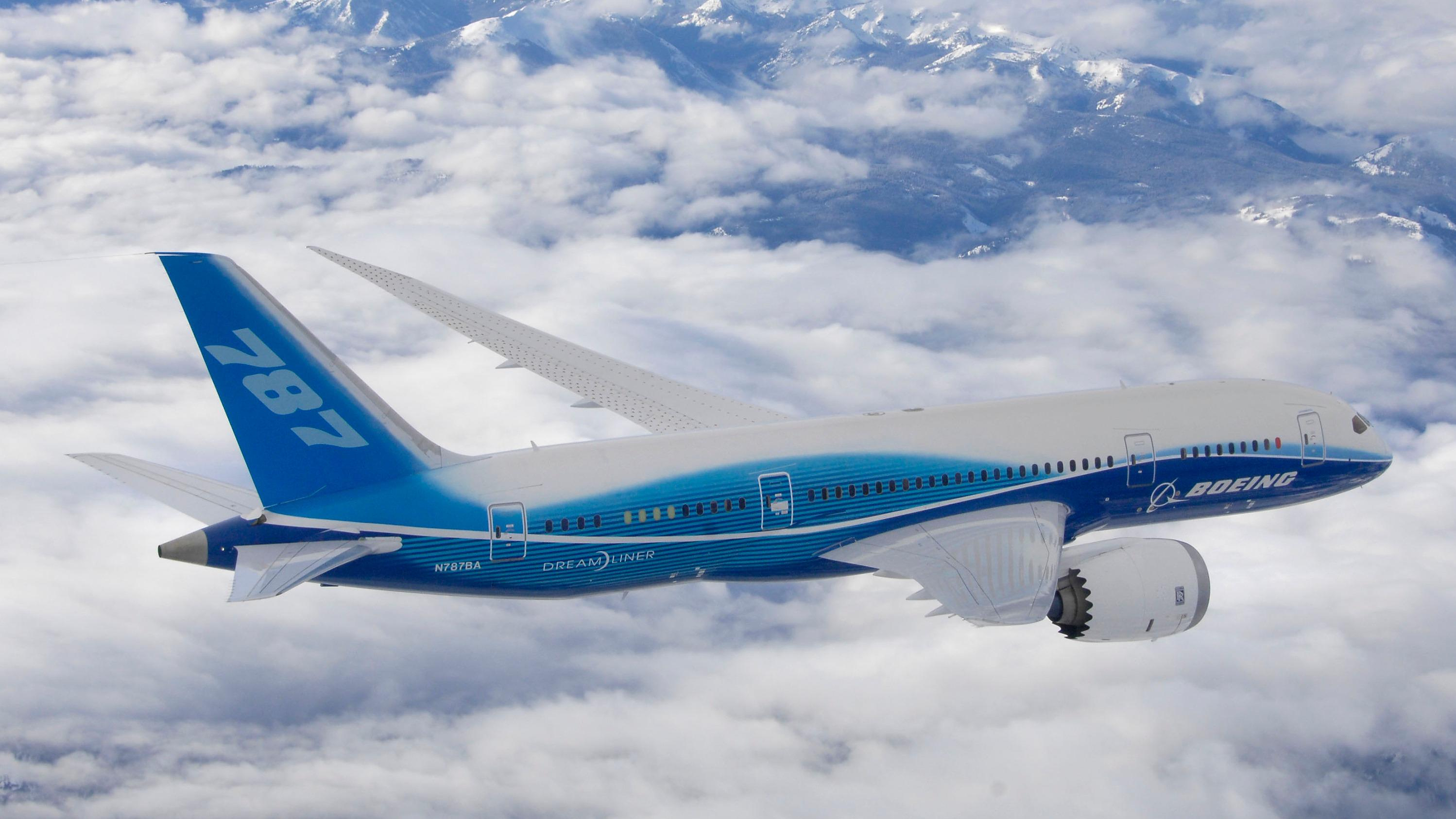All major functions of the US Navy airship L-8 were intact. Tanks were full, radio was working, engine switch was on, life raft, Browning machine gun and codes were in place. Only the door to the gondola was open and there was no sign of the crew. L-8 was a ghost ship.
August 16, 1942 presented the US Navy with a mystery that has not been solved to this day. L-8 had departed from its base on Treasure Island near San Francisco just after 6 a.m. on a patrol flight to look for Japanese submarines over the west coast. It landed on a street in Daly City, south of San Francisco, around 11:30 a.m. According to witness statements, the landing is said to have been almost perfect. There was no trace of the commander, Lieutenant Ernest DeWitt Cody, and his co-pilot, Lieutenant Charles Adams.
On December 7, 1941, Japanese carrier aircraft attacked the US Pacific Fleet at Pearl Harbor, Hawaii. America declared war on Japan, which finally became a world war.
Source: WORLD
L-8 was a so-called bouncing airship, that is, it lacked the rigid inner structure of the zeppelins and functioned like a balloon. Conceived by Goodyear before the outbreak of war for advertising sightseeing flights, it was adopted by the Navy after the Japanese attack on Pearl Harbor in December 1941 together with identically constructed airships - they were called blimps. Since the payload and range were low, the vehicles, which could fly at just 100 kilometers per hour, were used for coastal reconnaissance.
The Blimps' ability to maintain their position reasonably stable over a point earned L-8 a cameo appearance in one of the US Navy's first major forays. While the Japanese armed forces were overrunning large parts of East and Southeast Asia in lightning campaigns, the USA wanted to launch a first counterattack with a spectacular commando operation: 16 twin-engine North American B-25 Army bombers were to be brought this close to the main Japanese islands from an aircraft carrier to bomb Tokyo and then land in China.
In early April 1942, the new aircraft carrier USS Hornet set course for Japan. Since the Army bombers were not equipped with folding wings, they blocked the flight decks. Weapons and other equipment were removed during the journey to increase the range of the machines. In return, navigation domes and other spare parts had to be provided for the "Hornet", a task assigned to the L-8. Floating above the deck, the handover took place without any problems. The air raid, led by Lieutenant Colonel James H. Doolittle, was successful and all 16 bombers reached the Chinese coast.
Then L-8 found himself transferred to the rather monotonous patrol duty. The flight, which was scheduled for August 16, 1942, promised a change of pace. Because the morning dew weighed down the airship unduly, J. Riley Hill, who was to accompany the pilots as a mechanic, was released.
After an hour and a half, an alarming message reached Moffett Field Main Base. L-8 spotted an oil film on the sea about 45 kilometers west of San Francisco. This was considered possible evidence of the presence of Japanese submarines, which, however, were sighted off the US coast with regularity in the post-Pearl Harbor hysteria. The crew of L-8 reported that they would take a closer look at the matter and ended the radio message with "stand by".
When an attempt to reach the airship from the main base, Moffett Field, failed, two reconnaissance planes were dispatched. However, the seaplanes missed their target because of the low cloud cover. Shortly before 9 a.m., the crews of several ships claimed to have observed smoke being thrown into the sea from a low-flying airship. The vehicle then gained height and finally disappeared into the clouds. The eyewitnesses were certain that the crew was still in control of the aircraft at this point.
At approximately 10:30 a.m., a Navy seaplane sighted L-8s at an altitude of about 2,000 feet. That was twice the normal flight altitude. This time, too, the airship disappeared into the clouds, not purposefully, but drifting. A good half hour later, L-8 landed on Daly City's Bellevue Avenue, engines on and no crew. The collapsed hull was explained by the extraordinary flight altitude. There was no evidence of contact with water.
The immediately initiated search operation was without result. Investigations showed that the two experienced pilots would have reached the mainland even if the engines had failed by letting the airship drift like a balloon. While L-8 was being repaired and equipped for further everyday use in the war, its career as a ghost ship began.
The Japanese were suspected of a diabolical action. Of course, spy activities also came into play, and of course aliens also came into focus. Parallels were also drawn to the catastrophe of the German zeppelin LZ 129 “Hindenburg”, which exploded on May 6, 1937 while landing in Lakehurst, New Jersey.
The comparison with the "Italia" of the Italian airship pioneer Umberto Nobile seemed even more appropriate. It flew over the North Pole in May 1928, but then crashed near Spitsbergen. Ten of the 16 people on board were thrown onto the ice. One of the men died, the others survived - including Nobile. The zeppelin rose again very quickly, with the remaining six men on board - and disappeared without a trace.
So L-8 joins the series of mysterious events in the US Navy during the Second World War. The most famous is the "Philadelphia Experiment", in which it is said that an entire destroyer was able to "jump" electromagnetically over 500 kilometers. All wonderful material for conspiracy theorists.
You can also find "World History" on Facebook. We are happy about a like.
This article was first published in 2018.

 Torrential rains in Dubai: “The event is so intense that we cannot find analogues in our databases”
Torrential rains in Dubai: “The event is so intense that we cannot find analogues in our databases” Rishi Sunak wants a tobacco-free UK
Rishi Sunak wants a tobacco-free UK In Africa, the number of millionaires will boom over the next ten years
In Africa, the number of millionaires will boom over the next ten years Iran's attack on Israel: these false, misleading images spreading on social networks
Iran's attack on Israel: these false, misleading images spreading on social networks New generation mosquito nets prove much more effective against malaria
New generation mosquito nets prove much more effective against malaria Covid-19: everything you need to know about the new vaccination campaign which is starting
Covid-19: everything you need to know about the new vaccination campaign which is starting The best laptops of the moment boast artificial intelligence
The best laptops of the moment boast artificial intelligence Amazon invests 700 million in robotizing its warehouses in Europe
Amazon invests 700 million in robotizing its warehouses in Europe Switch or signaling breakdown, operating incident or catenaries... Do you speak the language of RATP and SNCF?
Switch or signaling breakdown, operating incident or catenaries... Do you speak the language of RATP and SNCF? Transport in Île-de-France: operators are pulling out all the stops on passenger information before the Olympics
Transport in Île-de-France: operators are pulling out all the stops on passenger information before the Olympics Radio audiences: France Inter remains firmly in the lead, Europe 1 continues its rise
Radio audiences: France Inter remains firmly in the lead, Europe 1 continues its rise Russian cyberattacks pose a global “threat”, Google warns
Russian cyberattacks pose a global “threat”, Google warns A new Lennon-McCartney duo, more than 50 years after the Beatles split
A new Lennon-McCartney duo, more than 50 years after the Beatles split The Curse vs Immaculée: two thrillers but only one plot
The Curse vs Immaculée: two thrillers but only one plot Mathieu Kassovitz adapts The Beast is Dead!, the comic book about the Second World War and the Occupation by Calvo
Mathieu Kassovitz adapts The Beast is Dead!, the comic book about the Second World War and the Occupation by Calvo Goldorak 'has never lived so much as now'
Goldorak 'has never lived so much as now' Skoda Kodiaq 2024: a 'beast' plug-in hybrid SUV
Skoda Kodiaq 2024: a 'beast' plug-in hybrid SUV Tesla launches a new Model Y with 600 km of autonomy at a "more accessible price"
Tesla launches a new Model Y with 600 km of autonomy at a "more accessible price" The 10 best-selling cars in March 2024 in Spain: sales fall due to Easter
The 10 best-selling cars in March 2024 in Spain: sales fall due to Easter A private jet company buys more than 100 flying cars
A private jet company buys more than 100 flying cars This is how housing prices have changed in Spain in the last decade
This is how housing prices have changed in Spain in the last decade The home mortgage firm drops 10% in January and interest soars to 3.46%
The home mortgage firm drops 10% in January and interest soars to 3.46% The jewel of the Rocío de Nagüeles urbanization: a dream villa in Marbella
The jewel of the Rocío de Nagüeles urbanization: a dream villa in Marbella Rental prices grow by 7.3% in February: where does it go up and where does it go down?
Rental prices grow by 7.3% in February: where does it go up and where does it go down? Europeans: the schedule of debates to follow between now and June 9
Europeans: the schedule of debates to follow between now and June 9 Europeans: “In France, there is a left and there is a right,” assures Bellamy
Europeans: “In France, there is a left and there is a right,” assures Bellamy During the night of the economy, the right points out the budgetary flaws of the macronie
During the night of the economy, the right points out the budgetary flaws of the macronie Europeans: Glucksmann denounces “Emmanuel Macron’s failure” in the face of Bardella’s success
Europeans: Glucksmann denounces “Emmanuel Macron’s failure” in the face of Bardella’s success These French cities that will boycott the World Cup in Qatar
These French cities that will boycott the World Cup in Qatar Champions League: semi-final schedule revealed
Champions League: semi-final schedule revealed Serie A: AS Roma extends Daniele De Rossi
Serie A: AS Roma extends Daniele De Rossi Ligue 1: hard blow for Monaco with Golovin’s premature end to the season
Ligue 1: hard blow for Monaco with Golovin’s premature end to the season Paris 2024 Olympics: two French people deprived of the Olympic Games because of a calculation error by the international federation?
Paris 2024 Olympics: two French people deprived of the Olympic Games because of a calculation error by the international federation?


















